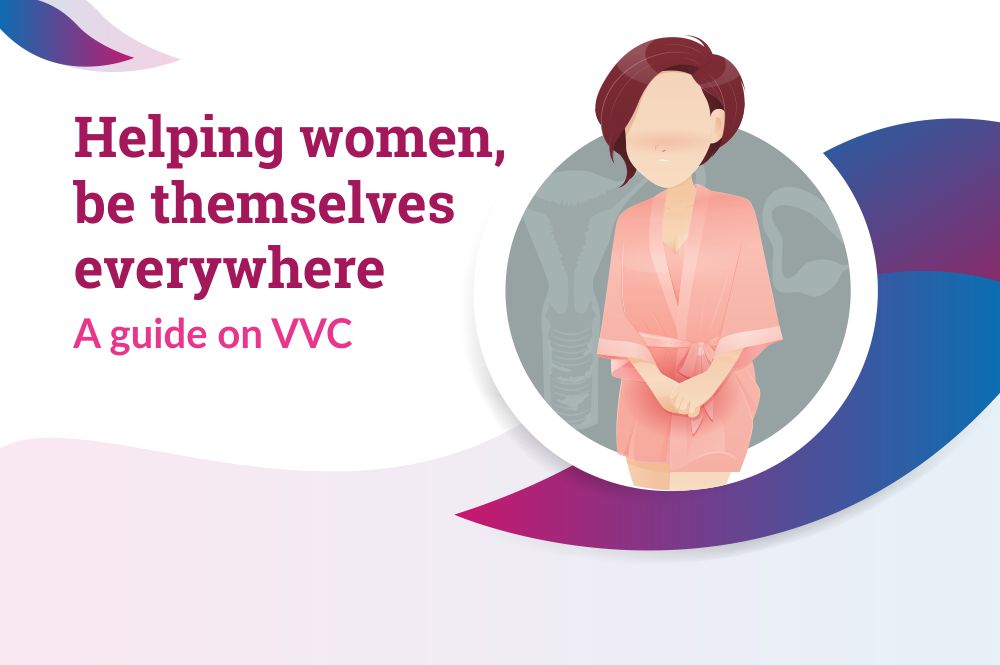- Home
- Healthcare Helping women, be themselves everywhere – A guide on VVC


Helping women, be themselves everywhere – A guide on VVC
21st Jul, 2020
The whole world has come together to support women related healthcare challenges in recent times. It is important for us to work towards breaking the stigma around intimate health. Vulvovaginal Candidiasis, is one such problem and brings with itself, a lot of taboo. In a dipstick survey conducted, it was found that 33% of the women candidates suffered from lowered self-confidence due to VVC.
What is VVC?
Vulvovaginal Candidiasis is a yeast infection of the vagina and vulva (inner and outer female genital area). Vulvovaginal Candidiasis is usually caused by the yeast Candida albicans. Candida albicans is responsible for over 85% of all yeast-induced vulvovaginal infections.
Who are at risk of developing VVC?
A woman can develop VVC due to following reasons-
- Diabetes or pregnancy
- Having unprotected sex or indulging in intense sexual activity (semen is alkaline and can affect vagina’s acidity)
- Using scented and dyed toilet paper
- Not maintaining the optimal vaginal pH balance or not following hygiene practices
- Wearing of tight clothes
- Excessive use of feminine sprays, scented soaps or wash
- Taking antibiotics or birth control pills
- Improper diet
- Stress or fatigue
What are the symptoms of VVC?
Itching (pruritus) and increased vaginal discharge are the most typical symptoms. Other symptoms are variable: soreness and burning, painful sexual intercourse (dyspareunia), or discomfort passing urine (dysuria). These symptoms may also occur in other vaginal infections.
A typical VVC infection causes redness (erythema) of the vagina and vulva. In severe infections, a typical white, thick, sticky vaginal discharge is seen, but a discoloured discharge may also be present.
Male partners may suffer from itching after sexual intercourse and may have tiny red spots and pustules (tiny white/yellow spots) on the glans penis.
Treatment of VVC
VVC is easily treatable but is sometimes recurrent in some women. Oral and topical anti- fungal drugs should be used in the management of VVC. However, they should be avoided in the first trimester of pregnancy. During pregnancy, topical anti- fungal treatment (such as fenticonazole, clotrimazole, fluconazole) with the preparation of vaginal capsule or cream is preferred.
Vulvovaginal candidiasis is not a sexually transmitted infection and the male partner does not need to be treated if he has no symptoms.
70-75% of women around the world suffer from Vaginal Candidiasis atleast once in their lifetime. And upto 50% of them suffer from recurrent candidiasis. It is a widely prevalent health issue in women.
At Cadila we feel addressing women’s healthcare issues in a global context is very important. It is Cadila’s endeavour to spread awareness amongst health professionals, patients, and others concerned with the complex and diverse facets of healthcare delivery to women.
Read more stories here:
Disclaimer:
All content, including text, graphics, images and information, contained in or available through this blog are for general information and self-awareness purposes. This blog has been created in good faith by Cadila Pharmaceuticals Ltd. No representation is made as to the completeness or accuracy of the information. All rights pertaining to this blog are reserved with Cadila pharmaceuticals limited.
Array ( )
To give you the best possible experience every time you visit our site, we use cookies to identify and store your preferences on your browser. Continuing to browse our site means that you are "ok" with this. Learn more about our privacy policy.
Okay

